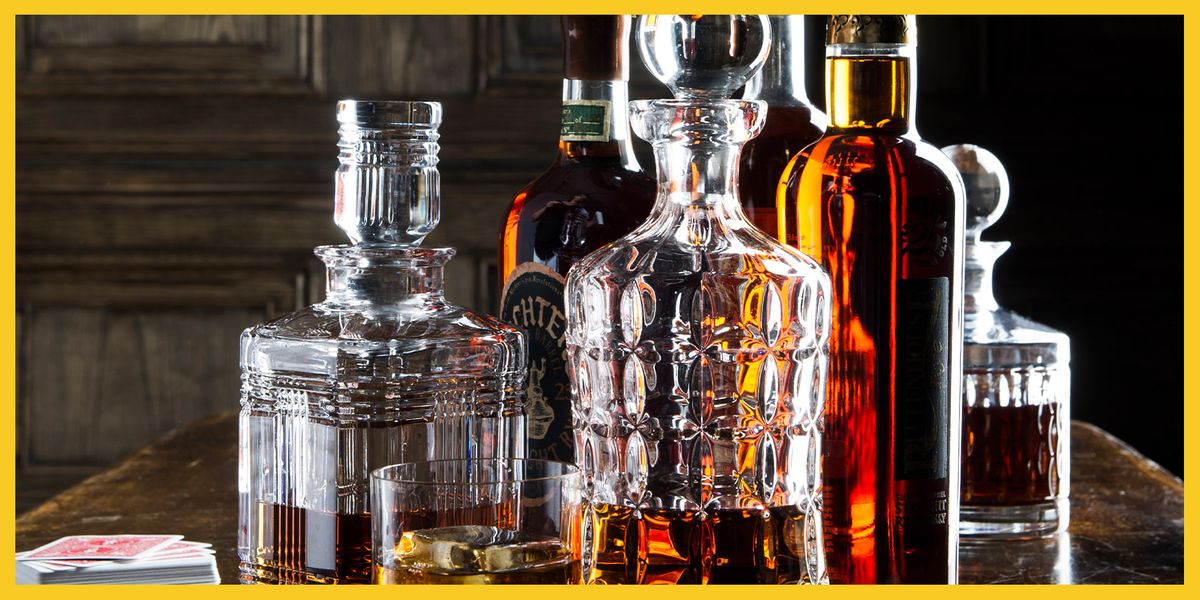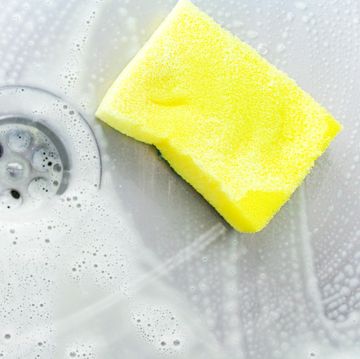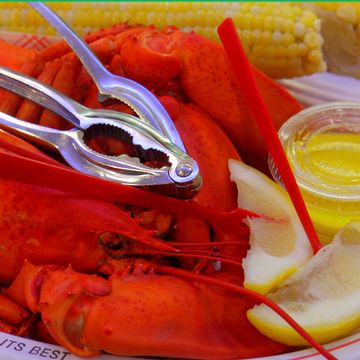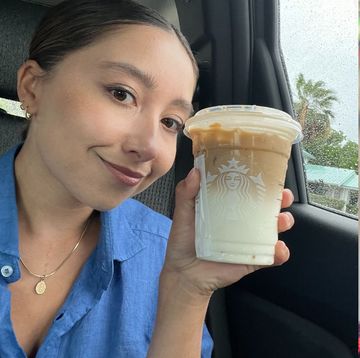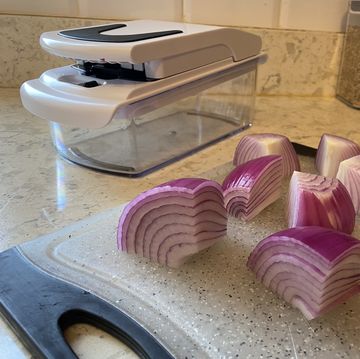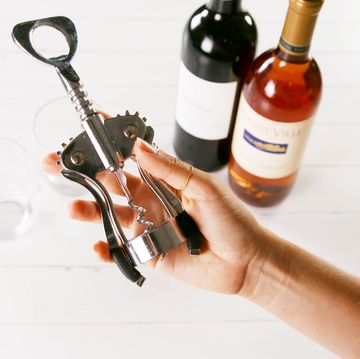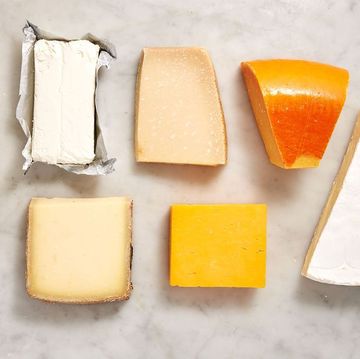Whiskey is one of the oldest types of alcohol on the market today. Starting from humble beginnings in European monasteries, the tradition of making distilled alcohol using fermented grain mash has grown and traveled to nearly every corner of the world.
These days, you can find rows and rows of different brands and styles at your local liquor store. Here are 20 bottles we love to sip. But what distinguishes bourbon from other types of American whiskey? What's the difference between "whisky" and "whiskey"? We consulted Sarah Jeltema, whiskey educator, Certified Specialist of Spirits, and the brain behind Whisky Nomad, to give us the scoop on the whiskey types you need to know.
Scottish Whisky
The oldest written record of whisky distillation can be traced back to Scotland in 1494, where a friar bought malted barley to make "aqua vitae" (Latin for "water of life"). The word "whisky" itself derives from the shortened Gaelic version of that phrase, "uisge," which was commonly spoken in the Scottish highlands.
More From Delish

Over the years, the Scotch industry has overcome obstacles associated with high taxes and rampant smuggling to establish itself as one of the predominant whisky markets in the world.
Scotch, by legal definition, is a whisky made with 100 percent malted barley, water, and yeast that’s aged for a minimum of three years in oak. In the cool Scottish climate, the spirits can sit in casks for decades and rack up a hefty price per bottle.
There are two primary categories of Scotch: single malts and blends.
“Single malts are designed to highlight one particular distillery," says Jeltema. With single malt distilleries like Glenmorangie and Lagavulin, you’re able to pick up the unique flavors they’ve spent centuries crafting.
Blended Scotch, on the other hand, can combine several malts from a variety of distilleries, which can balance out the individual flavors and make a recipe all its own. Johnnie Walker Black Label, for example, sources the whiskies for its blend from over 36 different distilleries. “They are very popular Scotches that a lot of people drink because they’re usually really easy to sip," she says.
Irish Whiskey
Ireland's proximity to Scotland explains many of the similarities between their whisky traditions. But Ireland's whiskey (with an e, because of its Irish Gaelic roots) has its own unique qualities.
“They’re neighbors with a long history of distillation,” says Jeltema. “But [Irish Whiskey] is a little bit looser with the definition.” While Scotch legally requires the combination of malted barley, water, and yeast, Irish whiskey can use corn and other grains. But, like its Scottish neighbor, Irish whiskey must be aged for a minimum of three years.
When you delve into the specific types of whiskey from Ireland, you can also find single malts and what they call single pot still. The definition of single pot still allows up to 30 percent malted barley. This type of whiskey came about after a 1785 tax on malted barley led distillers to create an entirely new category. “A lot of how whiskey comes about in different regions actually comes from the avoidance of the government, typically to avoid taxation or getting caught,” Jeltema says.
Japanese Whisky
Japanese whisky is an internationally renowned category, with even one bottle clinching Whisky Bible’s renowned title of Best Whisky in the World. However, it took several decades of experimentation to win over the hearts of global consumers.
The industry as we know it started in the early 20th century and can be credited to two men. Masataka Taketsuru and Shinjiro Torii, the founders of Nikka and Suntory, respectfully, collaborated to create a whisky for the Japanese market. Suntory Shirofuda (White Label) was launched in 1929 and relied on Taketsuru’s whisky knowledge from studying in Scotland.
This spirit was modeled after the flavors and processes of a peated Scotch-style whisky, but it did not initially achieve success in the Japanese market. “It failed completely because it did not mesh well with the culture of Japan,” Jeltema says.
After trial and error, and Taketsuru leaving to establish his own distillery, the industry eventually developed a signature style that better reflected Japanese palates. “The way they do things is very specific. It's very intentional and they are a big fan of subtle nuances,” says Jeltema.
Japanese whisky is renowned for its smoothness, and with each sip you can discover a new flavor you may not have noticed before.
“You take one sip and you get a certain flavor; you add a drop of water, everything changes. You take a second sip and it's a totally different experience,” Jeltema says. “And so when you really understand it, you're able to appreciate Japanese whisky on a whole different level as it reflects the culture that it's from.”
Canadian Whisky
Canadian whisky is a tradition steeped in centuries of history. Like whiskies across the pond, Canadian whisky must be aged for at least three years in a wood container, but they can use a variety of different types of wood.
You may have heard Canadian whisky referred to as rye, but their definition of rye is different than rye whiskey in America. In the States, rye whiskey legally must contain at least 51% rye grain. But in Canada, the word rye is interchangeable with any other type of Canadian whisky—which means it doesn’t have a minimum rye requirement.
“It can cause some confusion with people who aren’t as familiar,” Jeltema says.
There are rye whiskies that come out of Canada that contain 100 percent rye, but they’re often referred to as “flavoring spirits.” These flavoring spirits are typically used in small quantities to flavor blends, which the Canadian whisky industry is best known for.
“Their blended whisky definition allows for 9.09 percent of added ingredients. So that could be sherry, caramel, wine, brandy, it could be anything,” Jeltema says. “That is what is truly unique about Canadian blended whisky.”
American Whiskey
Bourbon is the most popular type of whiskey in the United States. It has one of the strictest definitions of any whiskey in the world. Bourbon must be made from a grain mixture that contains at least 51 percent corn. It must be aged in a brand new charred oak barrel and not distilled higher than 160 proof. And it must be made in the United States.
There’s a common misconception that bourbon must be made in the state of Kentucky. Bourbon can legally be made in any U.S. state.
“Generally speaking, the remaining 49 percent is 5-10 percent barley to get the enzymes for distillation and the rest is usually rye and additional corn,” Jeltema says. “The corn is very sweet, the rye has a lot of spice, and the blend creates something really magnificent. But you can put anything in there, like quinoa or wheat.”
The new oak barrels also contribute to bourbon’s signature flavor. Especially when aged in warmer climates, the barrels impart strong wood notes to the finished whiskey. Unlike other whiskey varieties, there is no minimum age requirement. “You’re not really able to age a bourbon for 30 years, because all you’re going to end up with is a bunch of wood notes,” Jeltema says. “That’s why bourbon is fairly young, compared to a 25-year-old scotch.”
For American Rye, almost all of the same rules as bourbon apply. The only exception is that instead of 51 percent corn, rye must be made with at least 51 percent rye grain. As a result, the spice-forward flavors of the grain take center stage and contribute to a sharper sip.
Tennessee whiskey is another popular variety from the United States that abides by many of the same requirements as bourbon. What makes it distinct, however, is that it’s made in the state of Tennessee and uses the Lincoln County Process prior to aging. This process involves filtering the whiskey with charcoal chips before entering the casks.
Beyond these existing categories, there is another type of whiskey in the United States that’s been gaining traction in recent years: American single malt. This type of whiskey is similar to single malt Scotch, except it’s made on American soil and has no minimum age requirement.
The flavor of American single malt varies based on the unique climates and terrains across the country. And many distilleries are utilizing local grain, water, and wood for a spirit that captures the terroir of their particular region.
Compared to the centuries-long single malt distillation traditions in Europe, the American single malt industry is fledgling by comparison. Just last year, over 30 years after the first American single malt entered the market, the Alcohol and Tobacco Tax and Trade Bureau started the process of establishing American single malt as an official legal category.
“It’s really exciting because Scotch is delicious, and I love it. But they've been making Scotch for so long. They're not really doing things differently,” Jeltema says. “But with American single malt being so new and everything being really diverse, distilleries are trying new things and creating something entirely unique.”
Some of Jeltema’s favorite American single malts come from Westland Distillery in Washington State, Westward in Oregon, and St. George Spirits in California.
What type of whiskey is your favorite? Let us know in the comments.
Gabby Romero is Delish’s editorial assistant, where she writes stories about the latest TikTok trends, develops recipes, and answers any and all of your cooking-related questions. She loves eating spicy food, collecting cookbooks, and adding a mountain of Parmesan to any dish she can.
